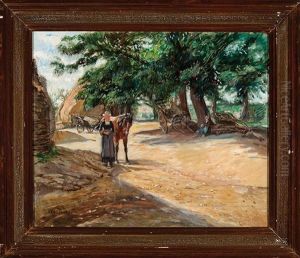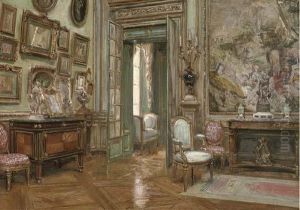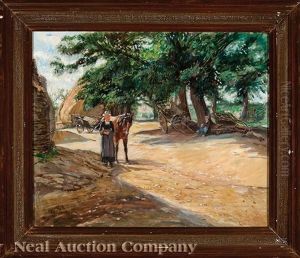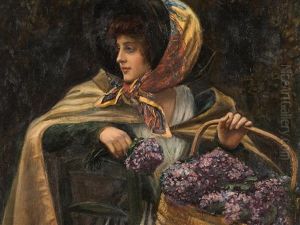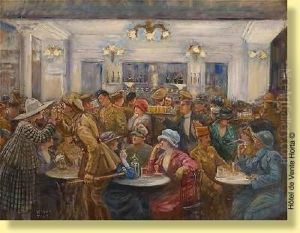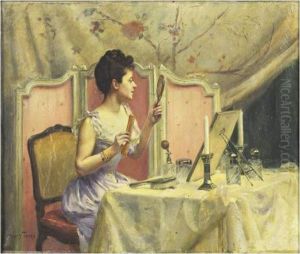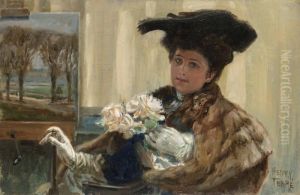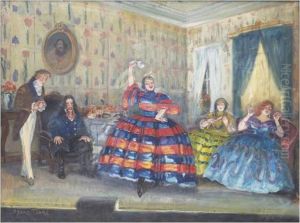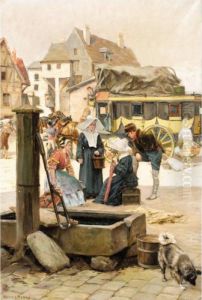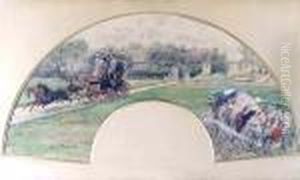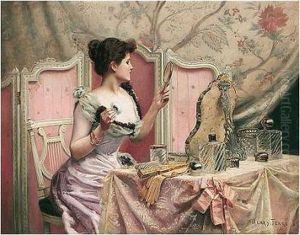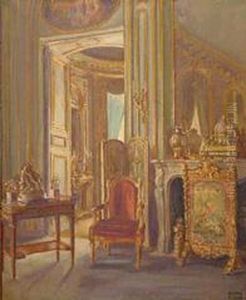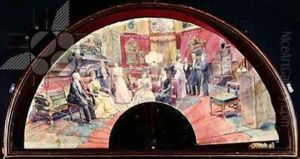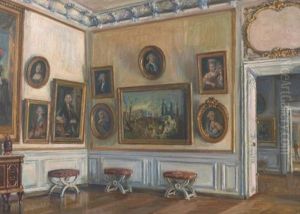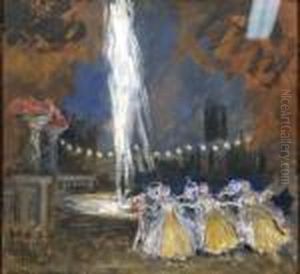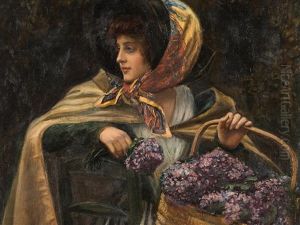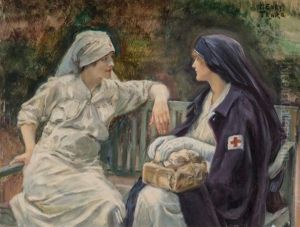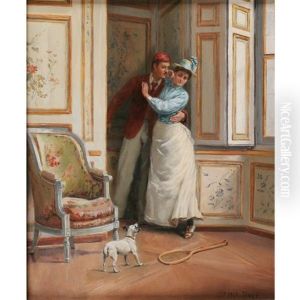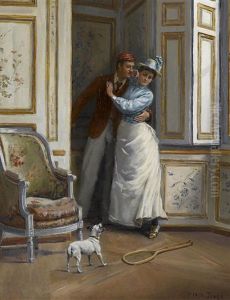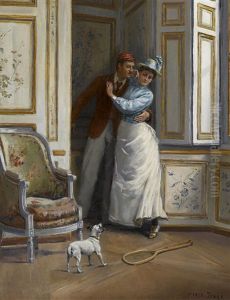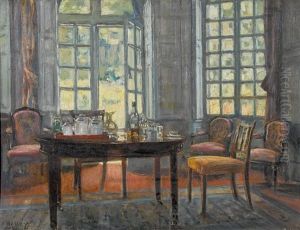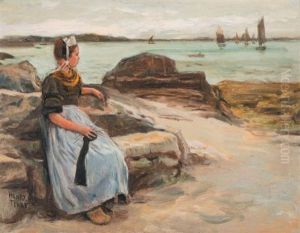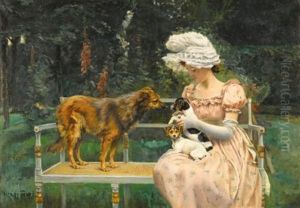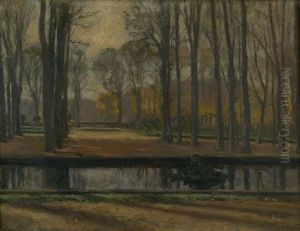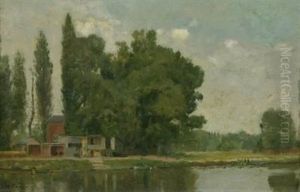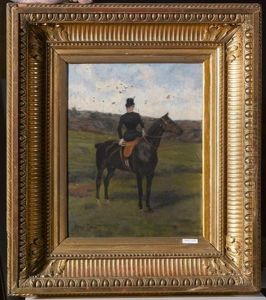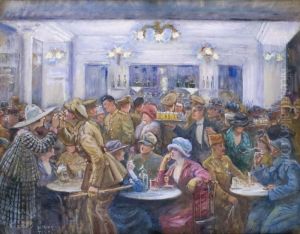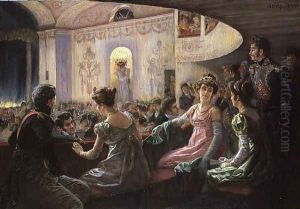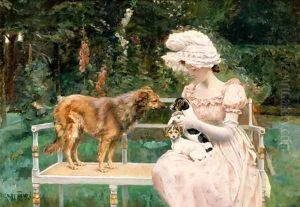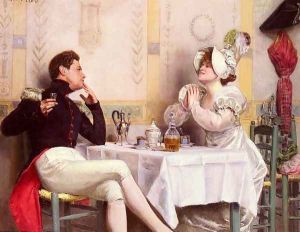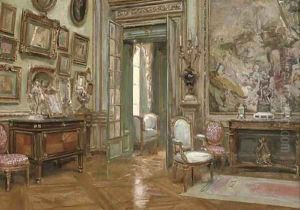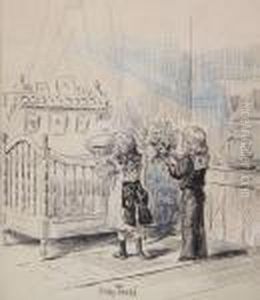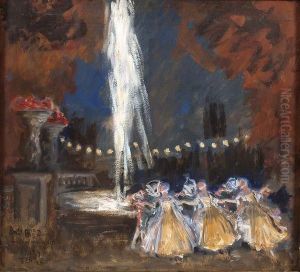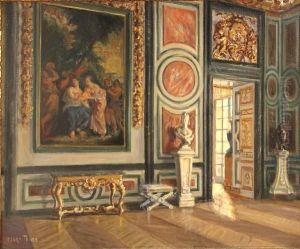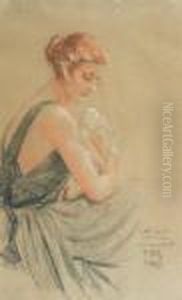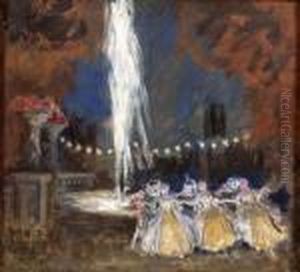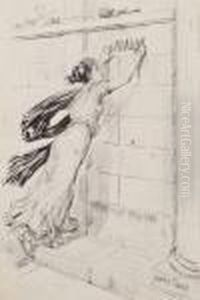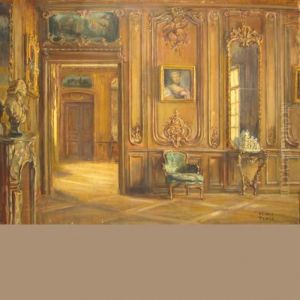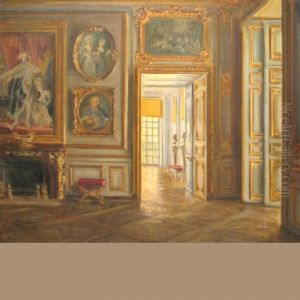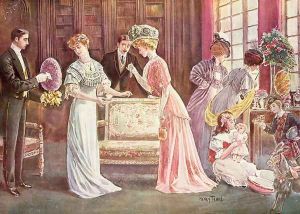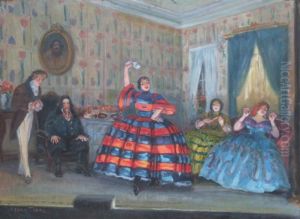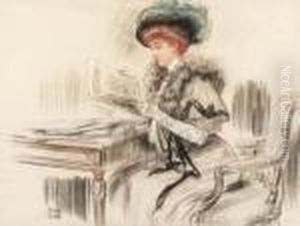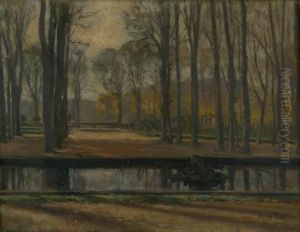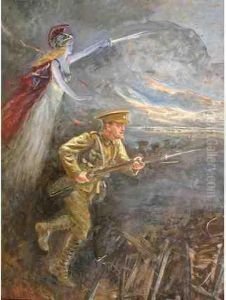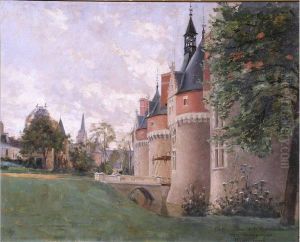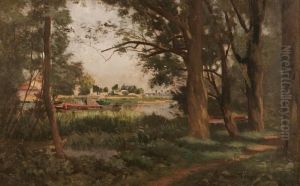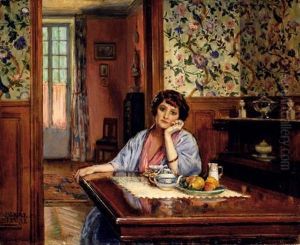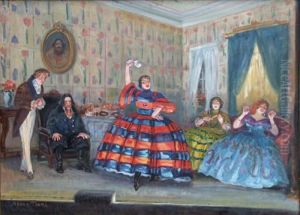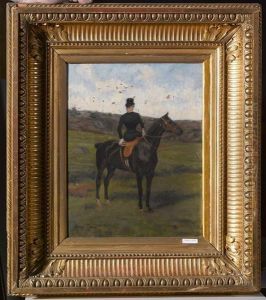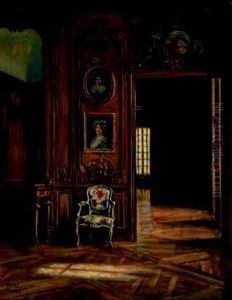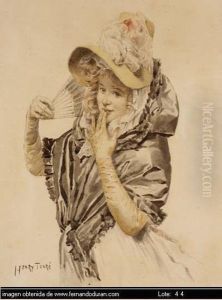Charles Henry Tenre Paintings
Charles Henry Tenre was a French artist known for his genre paintings, landscapes, and still lifes. Born on November 24, 1864, in Paris, France, Tenre came of age in an era that saw the transition from traditional academic art to the burgeoning Impressionist movement. However, Tenre's own style remained more aligned with the academic tradition, focusing on careful composition, clarity of form, and a relatively muted palette.
Despite the overshadowing fame of the Impressionists during his lifetime, Tenre managed to achieve a degree of success and recognition for his work. He studied under the academic painters Jean-Léon Gérôme and Aimé Millet, both of whom were prominent figures in the French art establishment. Their influence on Tenre is evident in his precise drawing and adherence to the conventions of genre painting.
Tenre's subject matter often included scenes of everyday life, including interiors with figures, which he rendered with meticulous detail and a certain formal elegance. He also painted a number of landscapes and still lifes, demonstrating versatility across different subjects. Tenre's landscapes are characterized by a sense of tranquility and often depict rural France with a gentle, pastoral quality.
During his career, Charles Henry Tenre exhibited his work at the Salon in Paris, which was the official art exhibition of the Académie des Beaux-Arts in Paris. His participation in such exhibitions helped to establish his reputation within the art community.
Tenre's works did not radically innovate in terms of technique or style, but they resonated with audiences who appreciated his craftsmanship and ability to capture the essence of the scenes he portrayed. After his death on October 6, 1926, Tenre's art continued to be appreciated by collectors and art enthusiasts, particularly those with a fondness for the academic art tradition of the late 19th and early 20th centuries.
Overall, Charles Henry Tenre's legacy lies in his commitment to the academic style and his capacity to convey the beauty of ordinary life through his paintings. Despite the lack of widespread fame, his contributions to French art provide a window into the era's tastes and values. His works today can be found in private collections and occasionally appear in auctions, where they are appreciated for their classical beauty and historical value.
